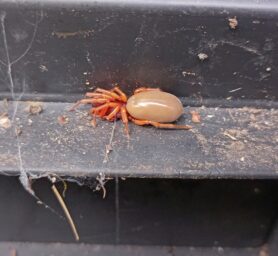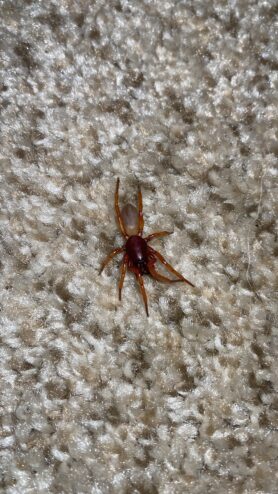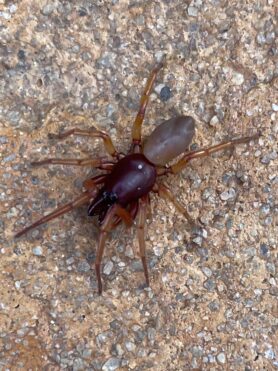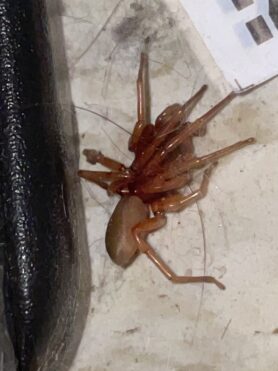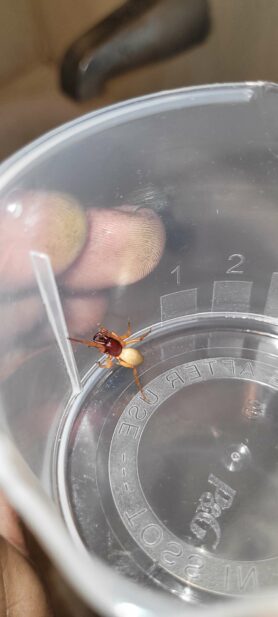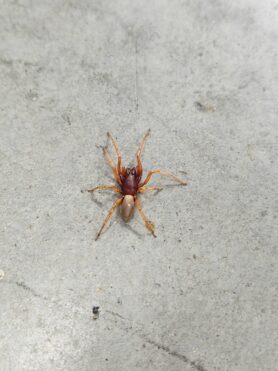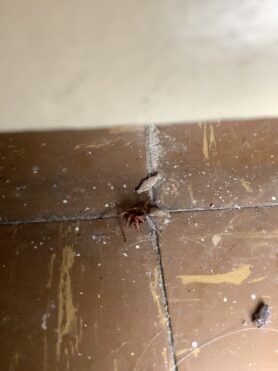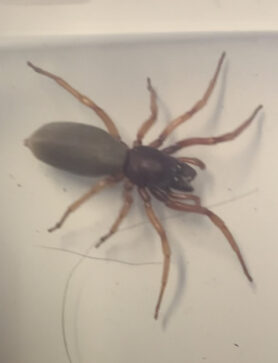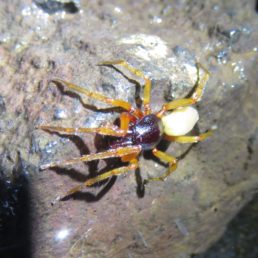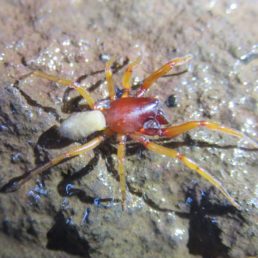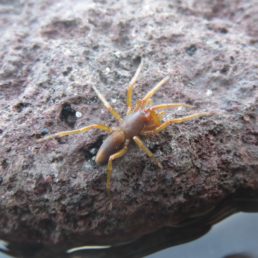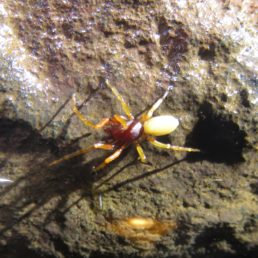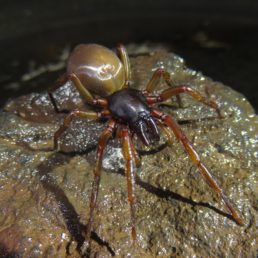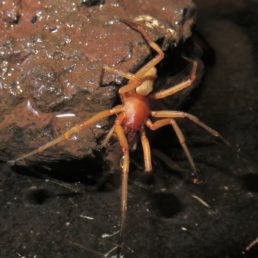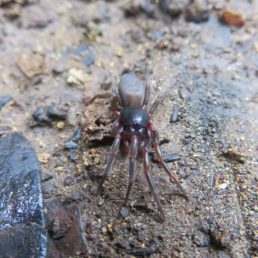Taxonomic Hierarchy
- Kingdom: Animalia
- Phylum: Arthropoda
- Class: Arachnida
- Order: Araneae
- Suborder: Araneomorphae
- Family: Dysderidae
- Genus: Dysdera
- Species: Dysdera crocata
Other Common Names
Dysderid Spider, Woodlouse Hunter, Woodlouse Spider, Sowbug Killer, Slater Spider, Pillbug Hunter, Orange Spider, Cell Spider, Long-fanged Ground Spider
Author
Carl Ludwig Koch, 1838
Primary Colors
Sightings Overview
There have been 162 confirmed sightings of Dysdera crocata (Woodlouse Hunter), with the most recent sighting submitted on April 12, 2024 by Spider ID member dorrianharris. The detailed statistics below may not utilize the complete dataset of 162 sightings because of certain Dysdera crocata sightings reporting incomplete data.
- Web: 8% of the time, Dysdera crocata spiders are sighted in a spider web (Sample size: 162)
- Sex: 4 female and 4 male.
- Environment: Dysdera crocata has been sighted 69 times outdoors, and 108 times indoors.
- Outdoors: Man-made structure (27). Low foliage (5). High foliage (1). Ground layer (15). Under rock or debris (21).
Location and Range
Dysdera crocata (Woodlouse Hunter) has been sighted in the following countries: Canada, Mexico, United Kingdom, United States.
Dysdera crocata has also been sighted in the following states: Alabama, Arizona, California, Colorado, Illinois, Indiana, Iowa, Kansas, Kentucky, Maryland, Massachusetts, Michigan, Minnesota, Missouri, Nebraska, Nevada, New Jersey, New York, North Carolina, Ohio, Oklahoma, Oregon, Pennsylvania, Tennessee, Texas, Utah, Virginia, Washington, West Virginia, Wisconsin.
Seasonality
Dysdera crocata has been primarily sighted during the month of April.
- January: 14
- February: 13
- March: 25
- April: 42
- May: 40
- June: 5
- July: 2
- August: 3
- September: 3
- October: 7
- November: 5
- December: 3
Additional Remarks
- Because of similar coloration, this spider can be mistaken for the “Broad-faced Sac Spider” (Trachelas tranquillus) and related species in that genus. Dysdera have 6 eyes while Trachelas have 8; the large fangs of Dysdera also help distinguish it.
- Egg sac may contain around 70 eggs, and is guarded by the female inside her silken retreat.
- Individuals make take about 18 months to mature, then survive an additional year or two on average.
- Prey seems to be preferentially terrestrial isopod crustaceans known as woodlice (aka “sowbugs” and “pillbugs”), but any other arthropods it can catch are fair game. The long fangs help the spider to maintain a scissor-like grip on woodlice, while typically using only one fang to pierce the prey’s softer underbelly.
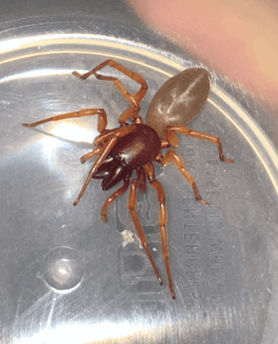 The spider species Dysdera crocata, commonly known as Woodlouse Hunter, belongs to the genus Dysdera, in the family Dysderidae. Dysdera crocata spiders have been sighted
The spider species Dysdera crocata, commonly known as Woodlouse Hunter, belongs to the genus Dysdera, in the family Dysderidae. Dysdera crocata spiders have been sighted 